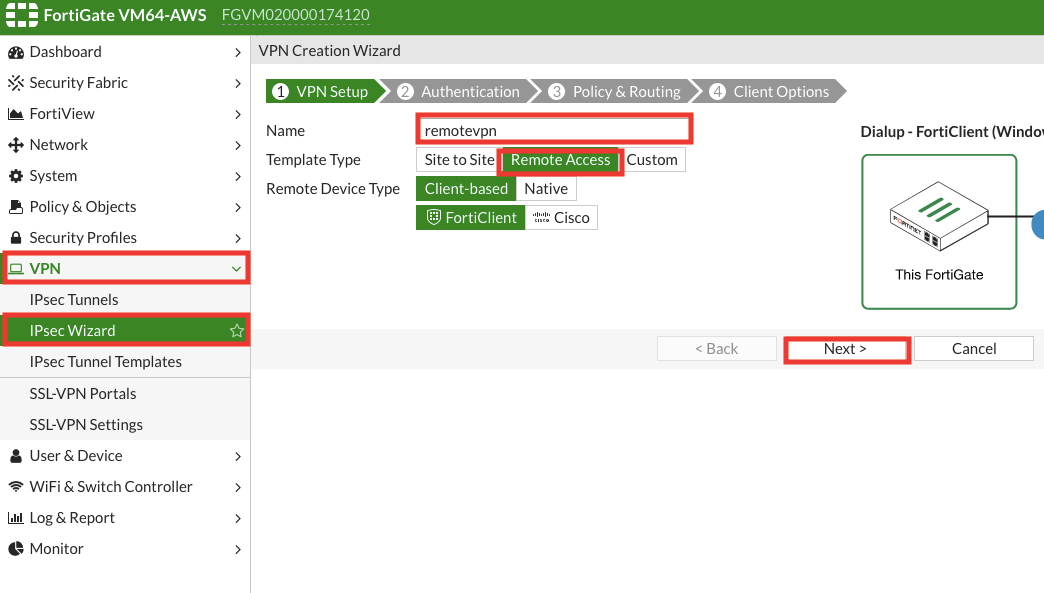

From an IT perspective, clientless ZTNA also doesn't offer the same level of control or visibility as an agent that's loaded on the device.
Fortinet vpn tunnel client software#
Rather than residing locally, the software has to download every time they connect, which slows down and degrades the user experience.

Although a few newer vendors are offering additional protocol support, the model is not suited to companies that have a combination of hybrid cloud and on-premises applications.īecause users don't have an agent, they must download a browser plug in before they connect to ZTNA. Because the application’s protocols must be based on HTTP/HTTPS, it limits the approach to web applications and protocols, such as Secure Shell (SSH) or Remote Desktop Protocol (RDP) over HTTP. This biggest limitation of clientless ZTNA is that it only supports cloud-based applications. Clientless ZTNA uses a browser plug-in to create a secure tunnel and perform the device assessment and posture check. The biggest difference from client-initiated ZTNA is that it doesn't require an endpoint agent. The service-initiated or "clientless" ZTNA model uses a reverse-proxy architecture. Sometimes called endpoint-initiated ZTNA, the client-initiated ZTNA model uses an agent on a device to create a secure tunnel. Vendors actually have adopted two primary approaches to implementing ZTNA in their products and services: client-initiated and service-initiated. It simplifies secure connectivity, providing seamless access to applications no matter where the user or the application may be located.Īlthough ZTNA is commonly thought of as a cloud-only feature or part of a SASE solution, that perception is incorrect. Zero-trust network access (ZTNA) is the next evolution of VPN remote access.


 0 kommentar(er)
0 kommentar(er)
